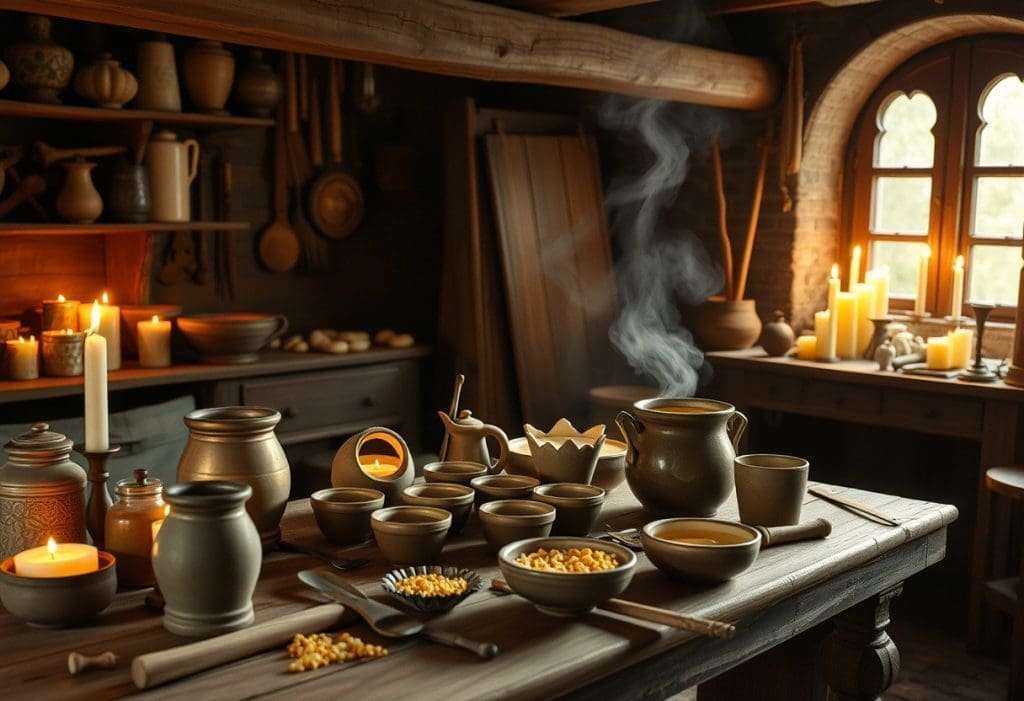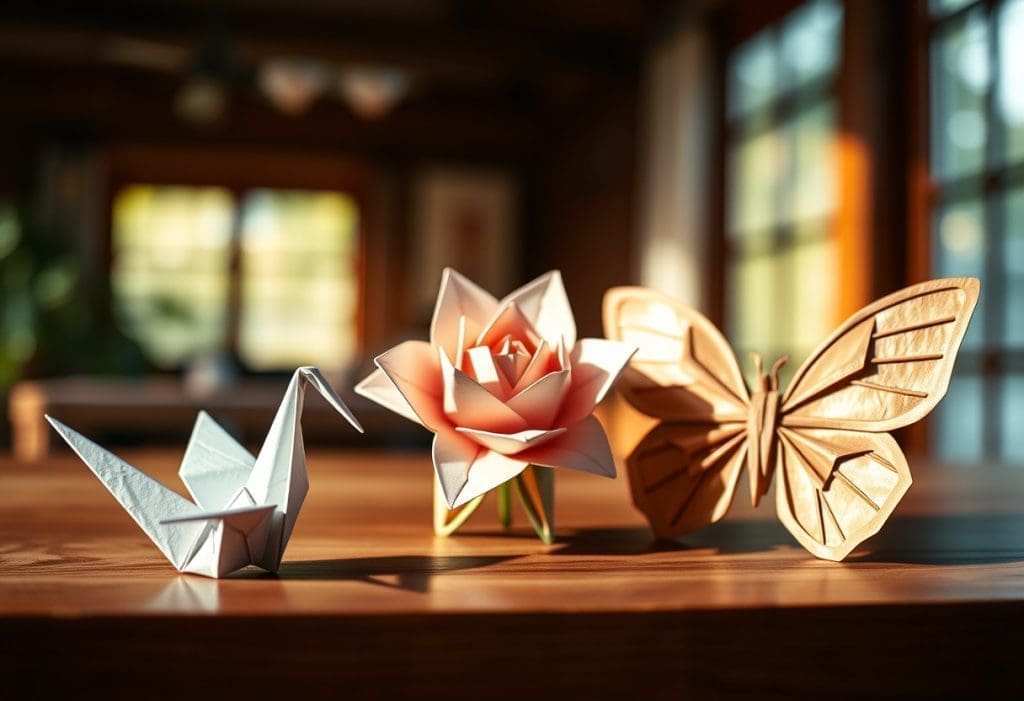Over the centuries, candle making has evolved from a simple necessity into an art form that adds warmth and ambiance to your home.
You might be surprised to learn how early civilizations crafted these illuminating wonders using materials like beeswax and tallow.
Join us as we explore the enchanting journey of candle making.
We will highlight its significance in various cultures and how modern technology has transformed this age-old practice into a delightful hobby for many enthusiasts, including yourself!
The Origins of Candle Making
Your journey into the history of candle making reveals a fascinating blend of culture and necessity.
Originating over 5,000 years ago, ancient civilizations like the Egyptians and Romans used natural materials such as beeswax, animal fat, and plant oils to create light sources.
Candles were not just practical tools for illuminating the dark. They held significant ceremonial and religious importance, illuminating the pathways of life in many cultures.
Ancient Techniques
The earliest candle makers used techniques that were simple yet effective.
Ancient Egyptians crafted candles from beeswax, using rushes for wicking.
The Romans improved upon this by dipping tallow and other fats, creating rudimentary light sources for homes and ceremonies.
The craftsmanship involved not only fulfilled practical needs but also reflected the artistry and rituals of the time.
Many societies used candles often in religious ceremonies and to honor the dead.
The Middle Ages
Behind the scenes of medieval history, candle making saw significant advancements as individuals shifted from tallow to beeswax for crafting their candles.
This change resulted in higher-quality candles that burned more cleanly and lasted longer. This, in turn, made them more desirable, albeit less accessible to the average person.
Monasteries emerged as key players in preserving and innovating candle-making techniques, ensuring that this necessary skill thrived through the ages.
Further exploration of the medieval period shows how candle making played a vital role in daily life, creating light for homes and places of worship.
As beeswax became the preferred material due to its purity, it was often reserved for the wealthy, while tallow was more accessible to the common folk.
Monasteries not only taught candle-making to novices but also turned it into a source of income, selling high-quality candles for various purposes.
The craftsmanship evolved, reflecting both the needs and the social structures of the time, bridging the gap between necessity and artistry.
The Industrial Revolution
One of the most significant changes in candle making occurred during the Industrial Revolution, which brought about a newfound efficiency in production processes.
With the introduction of materials like paraffin, candles became more affordable and widely available to the masses.
This era marked the rise of mass production, transforming candle making from a slow and delicate craft into a booming industry.
Innovations in Production
Innovations in production during the Industrial Revolution not only streamlined the candle-making process but also introduced new materials that enhanced performance.
The use of paraffin wax, derived from crude oil, offered improved burn quality and was cheaper to produce than traditional tallow or beeswax.
With factories churning out candles at high volumes, candles became staples in households.
The Decline of Handcrafted Candles
The decline of handcrafted candles surfaced as factories took over production, particularly impacting the artisanal nature of candle making.
While mass-produced candles provided consistency and affordability, candle makers sacrificed quality and uniqueness, as handcrafted elements were replaced by machine-generated designs.
The shift toward industrial production meant that many skilled artisans left the trade, leaving fewer options for uniquely crafted candles.
With a shift to mass production, the industry was reshaped. But it caused quite a stir, controversy even.
Candle buyers felt a loss of the personal touch they had previously enjoyed with their candles. Society had prioritized utility over character, and it showed.
The trade-offs between affordability and quality became evident. Many people struggled to balance the importance of supporting local artisans versus enjoying the convenience of mass-produced options.
The Modern Resurgence of Candle Making
Clearly, in recent years, there has been a remarkable resurgence of interest in handmade, artisanal candles, driven by a desire for unique, personal creations.
People are increasingly embracing the DIY movement, engaging in workshops and online tutorials to reconnect with the joy of crafting.
You might find yourself submerging into candle making, discovering not just a hobby but a way to express your personality.
Trends and DIY Culture
On the heels of this movement, DIY culture has encouraged many of us to explore creativity in every facet of our lives, including candle making.
This trend celebrates unique scents, personalized designs, and the satisfaction of creating something from scratch that reflects your style.
Eco-Friendly Practices
Behind this modern resurgence is a significant shift towards sustainability in candle making.
Today, you can choose natural waxes, essential oils, and eco-conscious production methods.
Many candle makers today aim to minimize their environmental impact, ensuring their creations are not only beautiful but also kind to the planet. If these values matter to you, consider them when deciding where to purchase candles.
Making eco-friendly candles means opting for sources like soy or beeswax instead of paraffin, as well as using natural vital oils for fragrance.
This conscious choice ensures that your candles are healthier for you and the environment.
Additionally, many artisans are adopting sustainable packaging solutions to further reduce waste (you may even find DIY candle making kits that use eco-friendly materials to enhance your crafting experience).
Candle Making in Different Cultures
After exploring the history of candle making, you’ll find that various cultures have embraced this art form in unique ways.
From the simple beeswax candles of ancient Egypt to the colorful floats used in the Diwali festival in India, candles hold significant meaning across different societies.
They symbolize light, hope, and warmth, weaving themselves into the everyday lives of individuals and communities alike.
Cultural Significance
By examining candles’ roles in religious ceremonies, celebrations, and rituals, you can appreciate their universal importance.
In many cultures, lighting a candle signifies prayer, remembrance, or even intention setting, serving as a tangible connection to the divine or to loved ones.
These practices show how candles facilitate both personal reflection and communal bonding.
Craft and Aesthetic Variations
Along your candle-making journey, you may discover the rich tapestry of styles and designs from around the globe.
Each culture brings its narrative to the craft, incorporating local materials, fragrances, and traditional techniques that elevate the aesthetic experience.
For example, Japanese candles often feature unique shapes, while Scandinavian designs prioritize minimalist beauty.
Consider exploring these influences in more detail, as they can help you find your own artistic style.
By understanding the craft and aesthetic variations in candle making, you will be able to embrace the stories and traditions behind each design.
Try infusing your creations with cultural elements or personal narratives. In this way, you will not only celebrate the art of candle making but also connect with a larger community of enthusiasts.
This exploration can reveal new techniques and inspire innovative projects.
To wrap up
Following this journey through the history of candle making, you can appreciate the artistry and craftsmanship that has evolved over centuries.
From ancient rituals to modern home decor, candles have illuminated lives in more ways than one.
As you explore your own candle-making adventures, you’ll not only create beautiful pieces for your space.
You will also connect with a timeless tradition that has brought warmth and light to countless people throughout history.
Welcome to the illustrious world of candle making!



